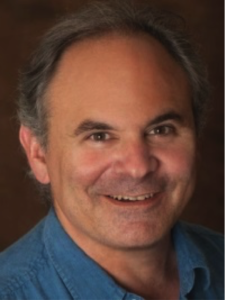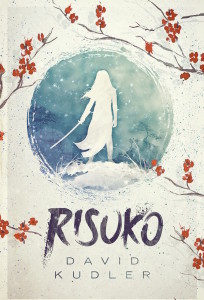Continuing with our author interviews author series, BAIPA board member John Byrne Barry interviews BAIPA vice-president David Kudler
 Somehow David Kudler, founder, publisher, and editor-in-chief for Stillpoint Digital Press, overseer of the publications program of the Joseph Campbell Foundation, independent publishing consultant, and vice president of BAIPA, has found the time to write and publish a book himself, Risuko, a teen historical adventure novel set in 16th Century Japan. I spoke with him on the phone on the morning of his book launch, June 15.
Somehow David Kudler, founder, publisher, and editor-in-chief for Stillpoint Digital Press, overseer of the publications program of the Joseph Campbell Foundation, independent publishing consultant, and vice president of BAIPA, has found the time to write and publish a book himself, Risuko, a teen historical adventure novel set in 16th Century Japan. I spoke with him on the phone on the morning of his book launch, June 15.
Q: I understand this is launch week for your new book, Risuko.
A: It’s today.
Q: What does that mean?
A: Up until now, the book has been available by pre-order. Now it’s actually shipping. I’ve been doing a series of promotional activities — letting people know about the book. It’s coming to a head today.
Q: Can you give me an example?
A: There’s been a sweepstakes going for the past couple weeks — I’ve been asking people to sign up for my mailing list. Winners will get a copy of my book, or a code to get an audiobook, which I am working on now. My daughter is reading it and I’m recording and producing it.
I had hoped to have it done by the launch, but she just graduated from high school, and has been a little busy. But having the audiobook come out in another month will give me another excuse to promote the book.
That’s how a lot of publishers do it. Hardcover first, then Ebook, then paperback, then audiobook. I don’t expect a lot of people to buy hardcover — it’s mostly for libraries, and for my Kickstarter supporters. I released the trade paperback today as well, which I assume will sell better than the hardcover.
Marketing guru Seth Godin says the best time to start promoting your book is two years ago. The advantage I have is that I’m writing a series, and Risuko is the first of four.
A: It’s set in war-torn Japan during the 16th century, and follows Risuko, the daughter of a disgraced samurai, who’ been purchased away from her family, and sucked into the middle of the civil war. She likes to climb trees, but without really understanding what’s going on, she is in training to be a kunoichi — in legends, female ninjas. Historically, there was a woman named Mochizuki Chiyome, a war widow of a samurai general who started a school for young woman after her husband died. To an outsider, these young women looked like miko (shrine maids), when in fact they were trained assassins, spies, and bodyguards. This is what Risuko discovers along the way, that she’s being trained to kill people. She’s not sure how she feels about that.
Q: How did you come to write it? This is not your run-of-the-mill story.
A: When my two girls were younger, they read a magazine called New Moon, and there was this story about Lady Chiyome, a real person who trained kunoichi, and there were pictures of the weapons. Holy cow, I thought, this is a great story! But there wasn’t much depth to it. I assumed someone must have written a book about this and when I found no one had, I decided I would.
I’ve always been interested in Japan. My father was stationed there when he was in the Air Force, and his two favorite kinds of movies were Westerns and samurai films — which are the Japanese versions of the Western. They were usually set during this awful time in the 16th century when Japan was wracked by civil war, which created opportunities in a rigid society. Constraints of class and clan and gender got blown up. Up to that point, it was all about what family you were born into. But now, as with Westerns, an individual has a chance to make choices, to be a hero. Someone who said they were a samurai, could be one.
My two daughters were also a huge inspiration for the story. The older daughter was cautious, the kind who never jumped. (Though she was the one we took to ER.) The younger one would jump, then look and figure out where she was going to land. Years ago, I was with my younger daughter at a playground, and she and a friend were playing while I talked with the friend’s mother. All of sudden, we couldn’t see the kids. Where were they? We heard them call from up in a tree. I looked up, and said as calmly as possible, “Why don’t you guys very carefully climb down?”
That’s when I started mapping out the book, starring a girl who liked to climb.
Q: Does your daughter think it’s about her?
A: Both are inspirations for the character, though it’s neither of them.
Part of what I wanted to do was write an adventure story from a girl’s point of view. We read Harry Potter. We read Artemis Fowl. Wouldn’t it be nice, I thought, if there were a girl-centered adventure? The other idea was to approach a historical novel more like a fantasy.
The history is in the background. The young girl is fairly innocent at first. She doesn’t care about the history, only as it relates to her life.
Q: When you started, did you map out four books?
A: They say there are two kinds of writers — plotters and pantsers. I straddle that divide. I started writing, and after a couple of chapters, I did a rough outline. Then, I found myself blocked after about 20 chapters. I couldn’t see how I was going to finish. About that time, I was working on a new edition of Hero with a Thousand Faces, Joseph Campbell’s classic book on comparative mythology and the Hero’s Journey, and it took over my life. When I came back to my novel, I realized I had a hero story, and more than one book’s worth. My nice little teen adventure novel was three, maybe four books. I recalibrated, and was able to finish the first book.
Q: How do you end each book when you have a series?
A: One thing I hate as a reader is a heavy cliffhanger at the end of a book. I want an ending. With the Harry Potter books, each is a complete story. Each follows a Hero’s Journey. There’s a call to adventure. Adventure transforms the hero. The hero comes through with new knowledge.
Q: How old is the protagonist?
A: I don’t say, but she is about 13. She grows. Her understanding grows. The reader learns along with the protagonist. One of the mysteries, at the school, is solved by the end of story. Other mysteries are not solved. Part of the resolution leads to the next mystery. The ending opens out, but doesn’t resolve all the questions.
Q: What distinguishes a teen book from an adult book?
A: The main thing with any book is being clear about point of view. Part of my background is as an actor, so I think about getting into character. What is it like to see things through the eyes of a 13-year-old girl? I had to think a lot about language and diction. Not throw around a lot of Japanese terms.
I made the decision to translate all the place names. For instance, the province in the story is Totomi, which I translated as Serenity Province. Makes it a little less alien, so readers don’t feel like they’re in such a strange place. When I use Japanese language, it is extremely clear from the context, what it is. And there’s a glossary at the back.
Is there any sex or romance? Not in the foreground. Risuko doesn’t notice it, but the reader might.
Q: What did you learn from writing it?
A: I’ve edited books before, and I have written and published children’s books. My first book, The Seven Gods of Luck, was published by Houghton Mifflin in 1997.
I learned that life is short, art is long. No matter how much time you devote to writing the book, it will take longer. There’s always more to do. That’s even more true for the marketing end of things. You can never do too much.
It’s not something to do because you are going to make money. But it’s very satisfying to pick up a copy of your book, and think it’s going to be out there.
Q: What was the hardest part?
A: Rewriting. It’s so difficult to keep looking at the same material. Having other people reading helped a lot and gave me fresh feedback. The marketing is hard as well.
Q: I just saw this quote recently, from P.T. Barnum: “Without promotion, a terrible thing can happen . . . nothing.”
A: I don’t want to be P.T. Barnum, but the marketing is a really important part of the job. I’ve worked with clients who worked for years on a book, and they put the book out there and hoped it would find an audience. But that won’t happen without actively promoting the book. Adding to all the conversations around you. Still, there are only so many hours in the day.
Q: What do you do when you’re not writing?
A: Read. I read two ways. One is professionally: editing and designing Ebooks. There’s a reason I’ve gone from 20-10 vision to wearing glasses. And I read for pleasure. I also spend time with my family. That’s where my writing comes from.
Q: I’m assuming your daughters have read the book.
A: The younger one has read it. It’s hard for her. She identifies with the lead character. Early on, as I was writing it, I read the book to her. She’s since read it herself, and now she’s doing the voice for the audiobook.
Q: Tell me about the audiobook process.
A: I have a small recording studio in my house, a small padded area in my office with a nice mike. Julia has some acting training. She’s a good storyteller. We sit down. I have her read it through out loud and work with her as she comes to characters whose voices are different. She has an internal image of each of the characters, a different voice for all of them, the recurring ones, anyway. We’re trying to create these distinct voices, so that the listener always knows who’s talking. Julia is reading the Ebook on an iPad, so there’s no rustling of papers. I’m editing it together. My office is set into the hillside, like a concrete bunker. There’s a changing screen, with blankets to create a baffle, deaden the sound. It creates a quiet atmosphere.
Q: What’s next?
A: I’ve started the second book of the series, Bright Eyes — another nickname for the same girl. I hope to have it out by next year. But yeah, life is short, art long!
Find out more about Risuko and David Kudler at risuko.net.
